Tarangire National Park
- Overview
-
Overview – Tarangire National Park
Tarangire National Park is most famous for its dense population of elephants. These imposing animals are present in large numbers throughout the year, but are most abundant in the Dry season, particularly from July to November. This is also when zebra, wildebeest and other wildlife in the greater Tarangire migratory ecosystem converge on the park and its namesake river, which forms the only source of drinking water for miles around.
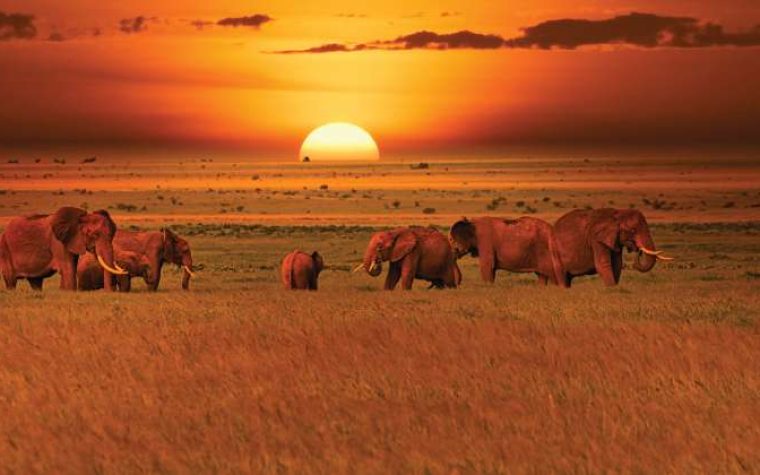

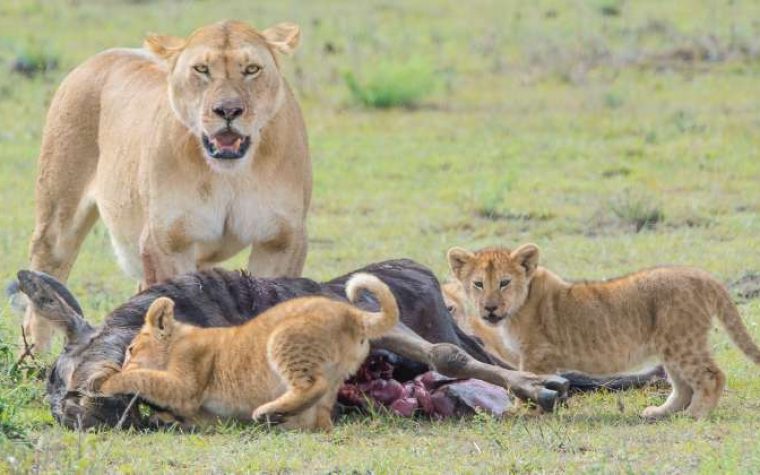


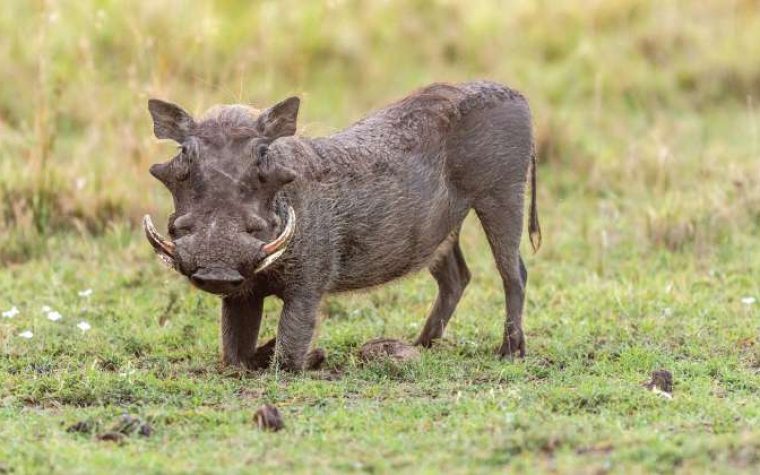
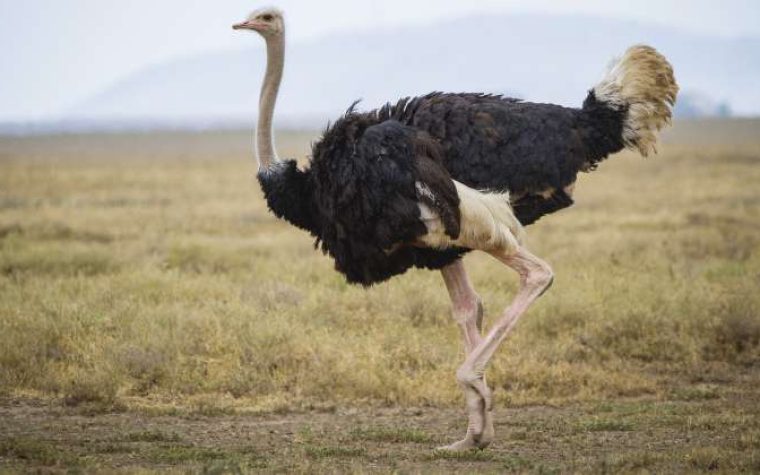

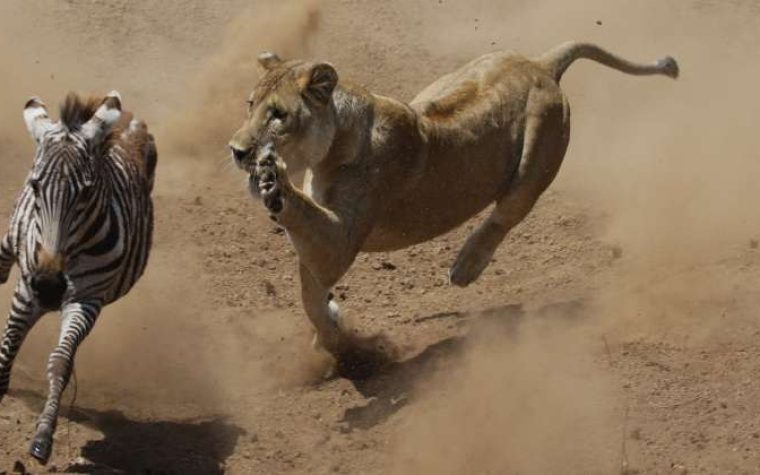

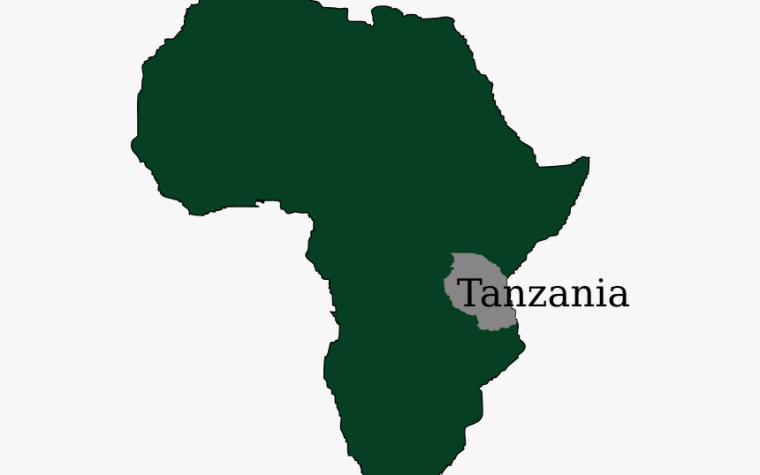
Best Time To Go
July to November (Animals come to the Tarangire River)
High Season
June to October (The park is full of visitors)
Size
2,850km² / 1,100mi²
Altitude
985-1,528m / 3,232-5,013ft
Pros
-- Incredible year-round elephant concentrations
-- Great general wildlife viewing in the Dry season
-- Excellent birding with many dry-country specials
-- Stunning scenery with big baobab trees
-- Excellent mid-range and luxury lodges
Cons
--It gets crowded during high season (June to October)
-- Animals are scattered in the Wet season
Wildlife
In the Dry season, herds of up to 300 elephants can be seen digging for underground streams in the dry riverbeds, while migratory wildebeest, zebra, buffalo, impala, gazelle, Coke’s hartebeest and eland crowd the shrinking lagoons. Of the big cats, only lion is regularly spotted. There are lots of smaller predators too, such as black-backed jackal and bat-eared fox. Abandoned termite mounds often house dwarf mongoose colonies.
Scenery
The park’s main feature is the Tarangire River. Although it gets very dry, the landscape is thickly vegetated with acacia shrubs and mixed woodland. Most memorable are the huge baobab trees dotted around in big numbers. The south of Tarangire is dominated by a vast seasonal swamp network.
Activities
Game drives in Tarangire are highly rewarding throughout the day in the Dry season. Early morning and late afternoon are best for spotting predators, but during the midday heat you’ll see big elephant herds drinking. You’ll get a very different experience on a night drive when you'll look for nocturnal animals by spotlight. The best way to get a true connection to the wilderness, though, is on foot on a walking safari. An armed ranger will keep you safe on this exciting activity.
Weather & Climate
Tarangire’s Wet season runs from November to May. November to December is usually the time of the short rains, while the long rains see heavier rainfall from March to May. In between, in January and February, is a brief period of drier weather. June to October is the Dry season.
Best Time To Visit
Tarangire is a seasonal park with lots of wildlife between July and November. At this time animals are attracted to the Tarangire River, the main source of drinking water. Pack plenty of warm clothes for early morning game drives at this time of year, as it’s cold when the sun is low in the sky.
- Wildlife
-
Wildlife & Animals – Tarangire NP
From July to November the Tarangire River is a magnet for migratory animals such as wildebeest, zebra, eland, Coke’s hartebeest, gazelle, buffalo and elephant – of which there are more than you can imagine. Lions are quite easily spotted at this time, as well.
Wildlife Highlights
Tarangire National Park is home to several dry-country antelope species, such as the rare fringe-eared oryx and the peculiar, long-necked gerenuk. The swampy areas in the south of the park offer some interesting wildlife-viewing opportunities. Wallowing elephants and buffalo are a given, but you might also be lucky to see the Silale Swamp lion pride and sometimes even wild dogs.










Best Time for Wildlife Viewing
July to November, when most of the water in the bush has dried up, is the best time for wildlife viewing. Large herds of animals migrate to the park from the surrounding areas. Animals are easier to spot because vegetation is thinner and wildlife gathers around the Tarangire River. From about December, many animals migrate out of the park again, and wildlife viewing is not as good
- Birds
-
Birds – Tarangire National Park
Tarangire National Park is a great bird-watching site with more than 500 species recorded. The park harbors several dry-country species at the extremity of their range, such as the northern pied babbler and vulturine guineafowl. Serious bird-lovers should also keep an eye open for flocks of the dazzlingly colorful yellow-collared lovebird and the somewhat drabber rufous-tailed weaver and ashy starling. These three are all restricted to the dry savannah of north-central Tanzania. Migratory birds are present from November to April.
Notable Birds in Tarangire National Park
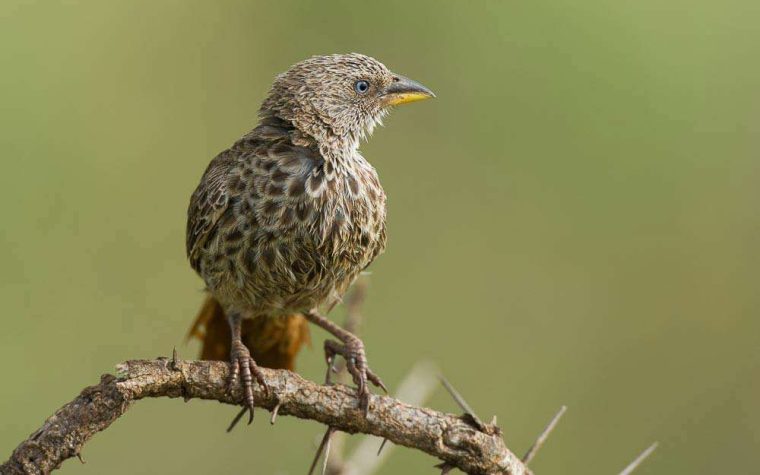
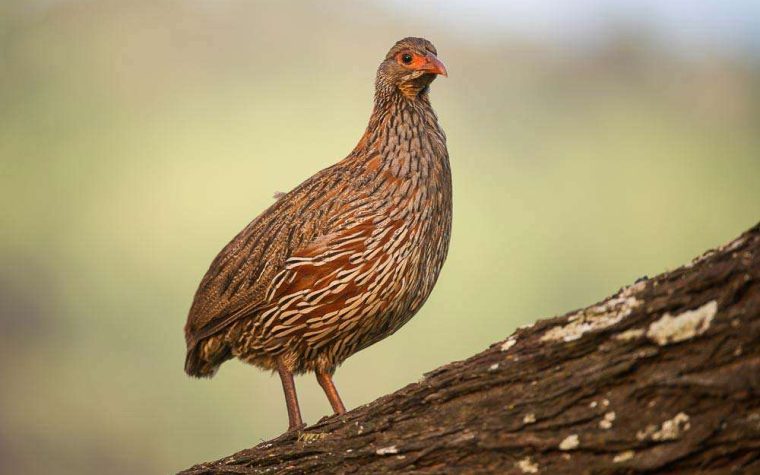
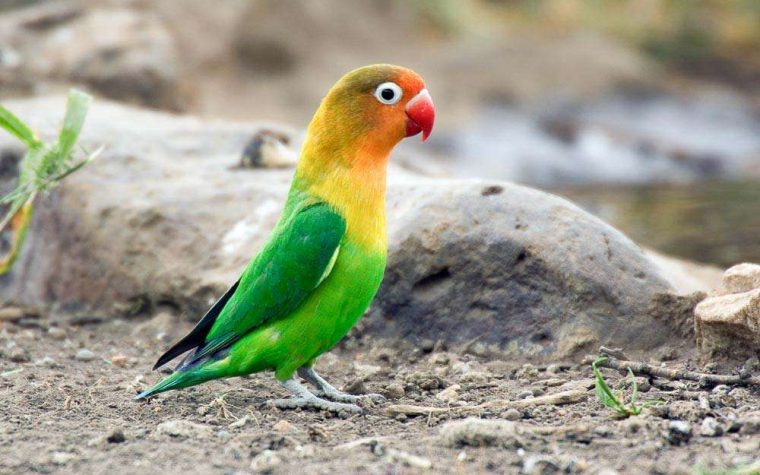

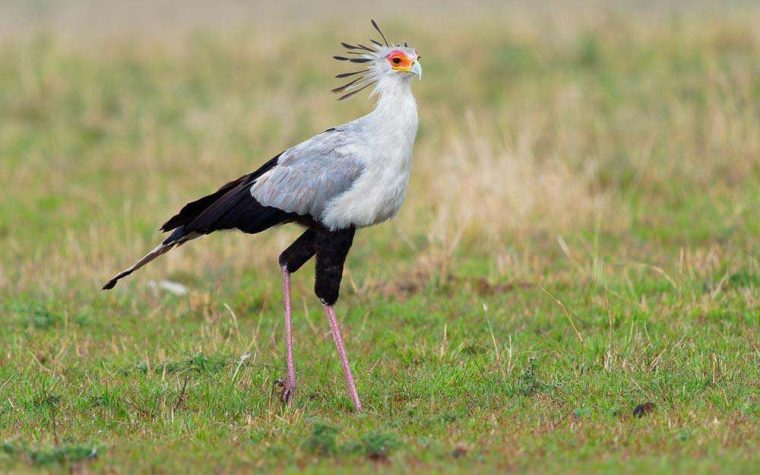
Birding Specials–Treats for Avid Birders
(E) endemic = only lives in Tanzania (NE) near-endemic = lives in Tanzania and neighboring countries
Best Time for Bird Watching
Birdlife is plentiful all year round, but bird watching is at its best when the Palearctic and intra-African migratory birds are present (November to April). Many resident birds are nesting during this same time, so it is easy to spot birds in their breeding plumage. Wildlife viewing is best from July to November.
- Best Time To Visit
-
Best Time To Visit –Tarangire National Park
July to November is the best time for wildlife viewing in Tarangire National Park. This coincides more or less with the middle and end of the Dry season. Many animals migrate out of the park during the Wet season (November to May), when wildlife viewing is considerably less productive.
- Excellent
- Good
- Fair
- Poor
- Best Time July to November (Animals gather around the Tarangire River)
- High Season June to October (The park is full of visitors)
- Low Season April and May (Rates might be lower)
- Best Weather June to October (Little rainfall)
- Worst Weather March and April (Peak of the Wet season)
Wildlife Photos in Serengeti National Park


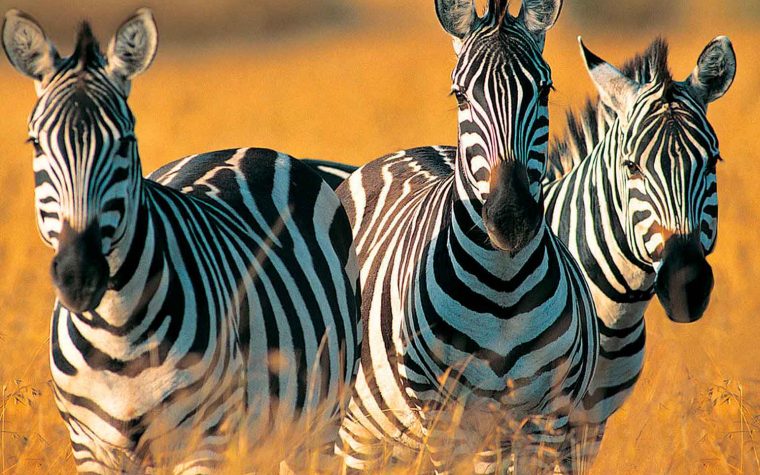

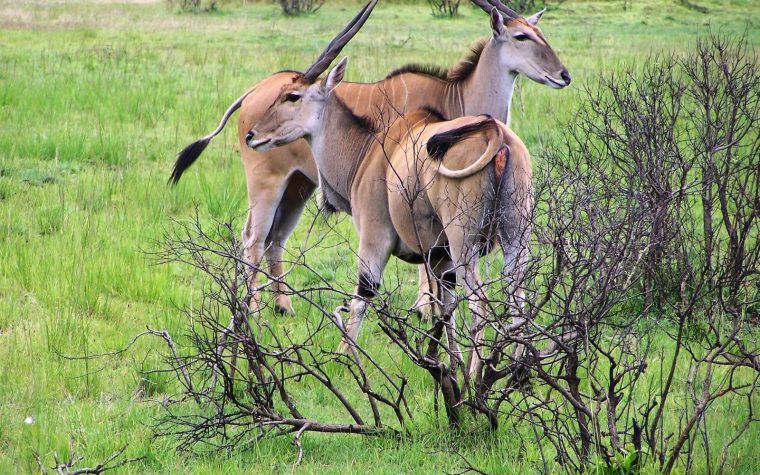
June to October – Dry Season
- Animals migrate into the park from surrounding areas
- Wildlife is easier to spot because the bush thins out
- The weather is beautiful and sunny
- There are fewer mosquitoes and malaria risk is lower
- Warm clothing is essential from June to August since morning game drives are cold
- The park is crowded
November to May – Wet Season
- The vegetation is lovely and green
- Rates may be lower because it is low season
- It is prime bird-watching time since migratory birds are present
- Many animals migrate out of the park and wildlife viewing is not as good as in the Dry season
- March to April is the peak of the Wet season
- Weather & Climate
-
Weather & Climate – Tarangire NP

The weather in Tarangire National Park is temperate and enjoyable. The Wet season consists of two rainy periods: the short rains (November to December) and the long rains (March to May). Around January and February rainfall decreases for a month or so. It usually rains in the afternoon and seldom for the entire day. It rarely gets too hot, but the evenings and mornings tend to get cold. Warm clothes for early morning game drives are recommended.
Wildlife Photos in Tarangire National Park





Dry Season – June to October
It is sunny and it hardly ever rains. It gets more dusty and the sky gets more hazy as the season progresses.
- June, July & August – Afternoon temperatures are close to 24°C/75°F. Days are clear with blue skies. It cools down at night with temperatures dropping to about 14°C/57°F.
- September & October – It is very dry and daytime temperatures rise to about 28°C/82°F. The first showers at the end of October come as a relief.
Wet Season – November to May
Afternoon temperatures are usually around 28°C/82°F, and nighttime temperatures are around 17°C/63°F.
- November & December –– 'Short rains' – October through December brings about four weeks of rain, the start of which is unpredictable. It will rarely have a negative effect on your trip, as it would be unusual for it to rain all day.
- January & February – A dry spell occurs after the short rains. The exact timing is difficult to predict.
- March, April & May – 'Long rains' – There is rain most days, although it rarely rains the entire day. Cloudy skies are common. Cold fronts usually roll in during April and May causing temperatures to get much colder.
- Getting There
-
Getting There – Tarangire NP
Tarangire National Park is part of the popular Northern safari circuit and is typically visited together with Serengeti National Park and the Ngorongoro Crater. Most safaris start from the town of Arusha. The best way to get there is to fly into Kilimanjaro International Airport (JRO), which is 50km/31mi from Arusha. It is also possible to fly into Julius Nyerere International Airport (DAR) in Dar es Salaam and on to Arusha Airport (ARK) or Kilimanjaro International Airport (JRO).
There are regular flights from Arusha and Serengeti to Tarangire, but driving is a good option too. It is a comfortable 2-hour* drive from Arusha to the park entrance gate, of which only the last 7km/4mi is not tarred. Moving on, it is an easy drive to Lake Manyara National Park (100km/60mi in about 2 hours*) or the Ngorongoro Crater (180km/110mi in about 4 hours*).
*Driving times are only a rough indication. You should always consider the possibility of significant delays.
Wildlife Photos in Tarangire National Park





Airlines & Ticket Prices
Please check Travel World Trails and Skyscanner to see which airlines can take you to Kilimanjaro International Airport (JRO) or Julius Nyerere International Airport (DAR), and what tickets would cost.
Domestic Flights
Domestic and charter flights between parks are usually booked by tour operators as part of the tour package. Domestic flights to Serengeti can be booked with several local carriers:
Passport, Visa & Other Entry Requirements
Please check our Getting There – Tanzania page to learn more about passport, visa and other entry requirements.
- Malaria & Safety
-
Malaria & Safety – Tarangire NP
Safety
It is very safe to travel in Tarangire National Park in our opinion. Crime against tourists is virtually unheard of in Tanzania’s parks and reserves. You should take normal safety precautions when driving between parks, and in cities and towns, but incidents are rare, especially when on an organized safari. For more information, see ‘Cities & Urban Areas: Safety Precautions’ below.
- General Travel Safety Precautions
- Cities & Urban Areas: Safety Precautions
- Staying Safe – Tanzania
- Governments’ Travel Advice for Tanzania
Malaria & Vaccinations
It is advisable to have several vaccinations before you travel. You will need to consult your local doctor or travel clinic. Malaria prevention is also important. Be sure to use mosquito repellent (those containing DEET are most effective) and take antimalarial medication. Wearing long sleeves and pants in the evening is also a good precaution.
- Malaria & Vaccinations – Tanzania
Wildlife Viewing
If you listen to the advice of your guide, wildlife viewing is very safe. If you’re on a self-drive safari, you should take note of the rules and regulations of the park. For additional information, read our ‘Wildlife Viewing Safety Precautions’ below.
- Wildlife Viewing Safety Precautions
Overview – Tarangire National Park
Tarangire National Park is most famous for its dense population of elephants. These imposing animals are present in large numbers throughout the year, but are most abundant in the Dry season, particularly from July to November. This is also when zebra, wildebeest and other wildlife in the greater Tarangire migratory ecosystem converge on the park and its namesake river, which forms the only source of drinking water for miles around.











Best Time To Go
July to November (Animals come to the Tarangire River)
High Season
June to October (The park is full of visitors)
Size
2,850km² / 1,100mi²
Altitude
985-1,528m / 3,232-5,013ft
Pros
-- Incredible year-round elephant concentrations
-- Great general wildlife viewing in the Dry season
-- Excellent birding with many dry-country specials
-- Stunning scenery with big baobab trees
-- Excellent mid-range and luxury lodges
Cons
--It gets crowded during high season (June to October)
-- Animals are scattered in the Wet season
Wildlife
In the Dry season, herds of up to 300 elephants can be seen digging for underground streams in the dry riverbeds, while migratory wildebeest, zebra, buffalo, impala, gazelle, Coke’s hartebeest and eland crowd the shrinking lagoons. Of the big cats, only lion is regularly spotted. There are lots of smaller predators too, such as black-backed jackal and bat-eared fox. Abandoned termite mounds often house dwarf mongoose colonies.
Scenery
The park’s main feature is the Tarangire River. Although it gets very dry, the landscape is thickly vegetated with acacia shrubs and mixed woodland. Most memorable are the huge baobab trees dotted around in big numbers. The south of Tarangire is dominated by a vast seasonal swamp network.
Activities
Game drives in Tarangire are highly rewarding throughout the day in the Dry season. Early morning and late afternoon are best for spotting predators, but during the midday heat you’ll see big elephant herds drinking. You’ll get a very different experience on a night drive when you'll look for nocturnal animals by spotlight. The best way to get a true connection to the wilderness, though, is on foot on a walking safari. An armed ranger will keep you safe on this exciting activity.
Weather & Climate
Tarangire’s Wet season runs from November to May. November to December is usually the time of the short rains, while the long rains see heavier rainfall from March to May. In between, in January and February, is a brief period of drier weather. June to October is the Dry season.
Best Time To Visit
Tarangire is a seasonal park with lots of wildlife between July and November. At this time animals are attracted to the Tarangire River, the main source of drinking water. Pack plenty of warm clothes for early morning game drives at this time of year, as it’s cold when the sun is low in the sky.
Wildlife & Animals – Tarangire NP
From July to November the Tarangire River is a magnet for migratory animals such as wildebeest, zebra, eland, Coke’s hartebeest, gazelle, buffalo and elephant – of which there are more than you can imagine. Lions are quite easily spotted at this time, as well.
Wildlife Highlights
Tarangire National Park is home to several dry-country antelope species, such as the rare fringe-eared oryx and the peculiar, long-necked gerenuk. The swampy areas in the south of the park offer some interesting wildlife-viewing opportunities. Wallowing elephants and buffalo are a given, but you might also be lucky to see the Silale Swamp lion pride and sometimes even wild dogs.










Best Time for Wildlife Viewing
July to November, when most of the water in the bush has dried up, is the best time for wildlife viewing. Large herds of animals migrate to the park from the surrounding areas. Animals are easier to spot because vegetation is thinner and wildlife gathers around the Tarangire River. From about December, many animals migrate out of the park again, and wildlife viewing is not as good
Birds – Tarangire National Park
Tarangire National Park is a great bird-watching site with more than 500 species recorded. The park harbors several dry-country species at the extremity of their range, such as the northern pied babbler and vulturine guineafowl. Serious bird-lovers should also keep an eye open for flocks of the dazzlingly colorful yellow-collared lovebird and the somewhat drabber rufous-tailed weaver and ashy starling. These three are all restricted to the dry savannah of north-central Tanzania. Migratory birds are present from November to April.
Notable Birds in Tarangire National Park





Birding Specials–Treats for Avid Birders
(E) endemic = only lives in Tanzania (NE) near-endemic = lives in Tanzania and neighboring countries
Best Time for Bird Watching
Birdlife is plentiful all year round, but bird watching is at its best when the Palearctic and intra-African migratory birds are present (November to April). Many resident birds are nesting during this same time, so it is easy to spot birds in their breeding plumage. Wildlife viewing is best from July to November.
Best Time To Visit –Tarangire National Park
July to November is the best time for wildlife viewing in Tarangire National Park. This coincides more or less with the middle and end of the Dry season. Many animals migrate out of the park during the Wet season (November to May), when wildlife viewing is considerably less productive.
- Excellent
- Good
- Fair
- Poor
- Best Time July to November (Animals gather around the Tarangire River)
- High Season June to October (The park is full of visitors)
- Low Season April and May (Rates might be lower)
- Best Weather June to October (Little rainfall)
- Worst Weather March and April (Peak of the Wet season)
Wildlife Photos in Serengeti National Park





June to October – Dry Season
- Animals migrate into the park from surrounding areas
- Wildlife is easier to spot because the bush thins out
- The weather is beautiful and sunny
- There are fewer mosquitoes and malaria risk is lower
- Warm clothing is essential from June to August since morning game drives are cold
- The park is crowded
November to May – Wet Season
- The vegetation is lovely and green
- Rates may be lower because it is low season
- It is prime bird-watching time since migratory birds are present
- Many animals migrate out of the park and wildlife viewing is not as good as in the Dry season
- March to April is the peak of the Wet season
Weather & Climate – Tarangire NP

The weather in Tarangire National Park is temperate and enjoyable. The Wet season consists of two rainy periods: the short rains (November to December) and the long rains (March to May). Around January and February rainfall decreases for a month or so. It usually rains in the afternoon and seldom for the entire day. It rarely gets too hot, but the evenings and mornings tend to get cold. Warm clothes for early morning game drives are recommended.
Wildlife Photos in Tarangire National Park





Dry Season – June to October
It is sunny and it hardly ever rains. It gets more dusty and the sky gets more hazy as the season progresses.
- June, July & August – Afternoon temperatures are close to 24°C/75°F. Days are clear with blue skies. It cools down at night with temperatures dropping to about 14°C/57°F.
- September & October – It is very dry and daytime temperatures rise to about 28°C/82°F. The first showers at the end of October come as a relief.
Wet Season – November to May
Afternoon temperatures are usually around 28°C/82°F, and nighttime temperatures are around 17°C/63°F.
- November & December –– 'Short rains' – October through December brings about four weeks of rain, the start of which is unpredictable. It will rarely have a negative effect on your trip, as it would be unusual for it to rain all day.
- January & February – A dry spell occurs after the short rains. The exact timing is difficult to predict.
- March, April & May – 'Long rains' – There is rain most days, although it rarely rains the entire day. Cloudy skies are common. Cold fronts usually roll in during April and May causing temperatures to get much colder.
Getting There – Tarangire NP
Tarangire National Park is part of the popular Northern safari circuit and is typically visited together with Serengeti National Park and the Ngorongoro Crater. Most safaris start from the town of Arusha. The best way to get there is to fly into Kilimanjaro International Airport (JRO), which is 50km/31mi from Arusha. It is also possible to fly into Julius Nyerere International Airport (DAR) in Dar es Salaam and on to Arusha Airport (ARK) or Kilimanjaro International Airport (JRO).
There are regular flights from Arusha and Serengeti to Tarangire, but driving is a good option too. It is a comfortable 2-hour* drive from Arusha to the park entrance gate, of which only the last 7km/4mi is not tarred. Moving on, it is an easy drive to Lake Manyara National Park (100km/60mi in about 2 hours*) or the Ngorongoro Crater (180km/110mi in about 4 hours*).
*Driving times are only a rough indication. You should always consider the possibility of significant delays.
Wildlife Photos in Tarangire National Park





Airlines & Ticket Prices
Please check Travel World Trails and Skyscanner to see which airlines can take you to Kilimanjaro International Airport (JRO) or Julius Nyerere International Airport (DAR), and what tickets would cost.
Domestic Flights
Domestic and charter flights between parks are usually booked by tour operators as part of the tour package. Domestic flights to Serengeti can be booked with several local carriers:
Passport, Visa & Other Entry Requirements
Please check our Getting There – Tanzania page to learn more about passport, visa and other entry requirements.
Malaria & Safety – Tarangire NP
Safety
It is very safe to travel in Tarangire National Park in our opinion. Crime against tourists is virtually unheard of in Tanzania’s parks and reserves. You should take normal safety precautions when driving between parks, and in cities and towns, but incidents are rare, especially when on an organized safari. For more information, see ‘Cities & Urban Areas: Safety Precautions’ below.
- General Travel Safety Precautions
- Cities & Urban Areas: Safety Precautions
- Staying Safe – Tanzania
- Governments’ Travel Advice for Tanzania
Malaria & Vaccinations
It is advisable to have several vaccinations before you travel. You will need to consult your local doctor or travel clinic. Malaria prevention is also important. Be sure to use mosquito repellent (those containing DEET are most effective) and take antimalarial medication. Wearing long sleeves and pants in the evening is also a good precaution.
- Malaria & Vaccinations – Tanzania
Wildlife Viewing
If you listen to the advice of your guide, wildlife viewing is very safe. If you’re on a self-drive safari, you should take note of the rules and regulations of the park. For additional information, read our ‘Wildlife Viewing Safety Precautions’ below.
- Wildlife Viewing Safety Precautions
Safari Tours to Tarangire National Park
4-Day Majestic Tarangire - Ngorongoro Crater - Serengeti
- 4D/3N
- Pax : 1
- $ 700
- From Arusha
2-Day Mountain Kilimanjaro and Tarangire Majestic Safari
- 2D/1N
- Pax : 1
- $ 745
- From Zanzibar
5-Day Tanzania Camping Safari to Serengeti National Park
- 5D/4N
- Pax : 1
- $ 890
- From Arusha
3-Day Group Tour to Serengeti & Ngorongoro
- 3D/2N
- Pax : 1
- $ 590
- From Arusha




